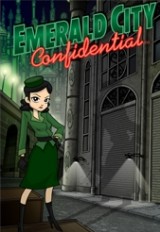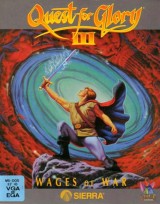Review for Neofeud

In a world of dystopian divides…
In an era when time travel is possible…
One point-and-click adventure so evokes the sci-fi works of the eighties and nineties that its review really should begin with a deep, rich voice-over introduction...
Set in a not-too-distant future that bears a strong resemblance to our not-too-distant past, Neofeud’s depiction of society draws obvious inspiration not only from cinema but literature as well, cleverly borrowing both visual and narrative elements to weave its own story of class conflict between the elite 1% and the remaining 99% across all sentient species (human, robot, and everything in between). The ideas behind Silver Spook Games’ 2D point-and-click debut are sound, the characters are compelling, and the dialog…does tend to go on. Still, two out of three ain’t bad, particularly when factoring in a distinctive art style (or collection of styles) and solid point-and-click adventuring to go along with them.
Neofeud places you in the shoes of divorced, down-on-his-luck, ex-cop turned social service worker Karl Carbon in the year 2033. Karl is scraping by, barely able to make ends meet in the dilapidated tenements that make up the majority of humanity’s living quarters, along with everyone else who wasn’t born with a silver spoon in their mouths. Meanwhile, floating above this decay and deterioration are various sky palaces populated by the privileged few families who descended from the rich and powerful and now run the world – all governments seemingly having fallen by this point.
A simple case sends Karl to a nearby junkyard where various humans, cyborgs, robots, and transgenics have built a shantytown of sorts. He’s been sent to check on one Johnny Silica, a mechanical juvenile delinquent, but finds only Johnny’s aunt, uncle and baby sister (also bots). Uncle Todd is depicted like a Terminator from the movie of the same name, but really he is a peace-loving hippie. Aunt Suzette is simply an overworked mom with a metal bun in the oven. Things take a turn for the worse when Karl receives orders from his boss to break up the family and take the baby into protective custody on the pretext that the tenement building is an unfit environment for the child.
After witnessing some truly heartbreaking events, Karl splits from social services and his broader adventure begins as he finds himself trapped in a web of intrigue between the neofeudal houses. Along the way he is joined by Proto-J, a young robot drug dealer, and Princess Sybil, daughter of the king of the most powerful family, the Clington-Busches. Using the princess’s time travelling skycar, the trio need to venture to the immediate past and future (think Back to the Future here) to orchestrate an overthrow of the lords who keep everyone else in abject poverty. It sounds a bit trippy when spelled out like that, but the game does a good job of making sense of it all in context.
It’s also important to point out that the mood is not all darkness and despair, as a lot of similar science fiction stories can be. There is a definite sense of humour present, and while the lower classes of society are aware of how downtrodden they are, they’re all just out to make as good a life for themselves as they can, finding comfort and enjoyment in each other’s company instead of wallowing in their own misery. The state of the world is objectively quite bleak, but the atmosphere doesn’t feel oppressive. In other words, although its themes are born from modern day cynicism, Neofeud is not a story that will leave you feeling depressed for a week after having played it. This is definitely more of a plucky cyberpunk adventure than doomsday cautionary tale.
The game takes place across a good selection of locales: Karl’s office is dimly lit and grungy, and the tenements and junkyards are all decrepit, while the floating palaces of the one percenters almost seem to come from a bygone romantic age. A starkly illuminated prison and a lush airborne golf course even make an appearance. Concepts like these feel not so much lifted from classic sci-fi movies, but rather like they would have been at home in such films if the creators had thought to include them.
Neofeud also does a good job of delineating its characters, especially its three leads. While you play as Karl for the most part, there are some sections where both Proto-J and the princess become available. Each character has their own attitude and abilities that are integrated into the scenarios and puzzles presented. From his days as a cop, Karl has a cybernetic arm that incorporates a blade, a blowtorch, and a Taser, which are used both for conventional and unconventional purposes. Proto-J is gifted with telepathic abilities, allowing him to get information from the minds of others and even control their bodies remotely for short periods of time. Princess Sybil, being heiress to the most powerful family on earth, has all the necessary clout, money, and connections to pull rank on bureaucrats and other officials the party meets.
Karl initially comes across as the gruff beat cop we’ve seen in other media time and again, ad infinitum. He’s even described by various people as the tough, unrelenting John McClane from Die Hard. As the story unfolds, however, deeper layers are revealed and Karl is shown to be barely holding things together emotionally, which gives him a greater and more relatable strength. Similarly, Princess Sybil, who at first seems like a rather ditzy airhead protesting against her father because that’s what daughters do, is shown to be genuinely concerned about the class divide in society and that she’s subtly rather clever. When she’s confronted with several tough moral choices, it makes her quite the sympathetic character.
My favourite of the main trio ended up being the drug dealing Proto-J, which is odd because if you’d asked me about him when he was first introduced, I would have preferred he not be in the game. With his semi-squeaky voice, slang-laden lines and too-cool-for-school attitude, he initially reminded me of a street-tough version – if such a thing could exist – of the annoying Ruby Rhod from another Bruce Willis movie, The Fifth Element. While I found Ruby remained annoying throughout that film, Proto-J really grew on me. There’s just something about how over-the-top “gangsta” he is that I found endearing. Not to mention the fact that he gets a couple of the most emotional moments – not bad considering he’s “just” a robot.
While the characterizations are all strong, unfortunately the dialog suffers from over-writing. Characters here do not deliver lines, they recite entire paragraphs. The result is that many conversations, especially when all three of the protagonists come together, tend to drag on and on. If The Longest Journey is loquacious, Neofeud is downright verbose. This can extend to the cinematics as well. There are many such cutscenes that run for seven, eight, even ten-plus minutes, which accounts for a large part of the game’s nine-hour play time. During these lengthy sequences, all you can do is sit passively by, watching character portraits talk to each other. To be sure, the script is well-written and infused with a lot of believable future slang, such as blue screening (a reference to the classic Windows Blue Screen of Death) being used as the term for robots who have taken critical drug overdoses. There’s just so much that it becomes a bit mind-numbing after a while.
Between bouts of expository dialog, Karl and friends have to deal with an assortment of challenges. From fixing various aspects of Karl’s decaying cybernetic arm, to learning enough to infiltrate the robot street gang Kromeboys, to investigating a murder scene and then returning to the past before the homicide occurs, there is good amount of variety on offer here. With only one or two exceptions, all necessary elements are located in the same scenes where the puzzles are solved. Combined with the minimal number of interactive areas per room in general, Neofeud’s obstacles are on the easier side, entirely manageable even if resorting to the simple brute force expedient of trying everything on everything from the small inventory collected along the way. A bit more gameplay complexity here would have been appreciated to complement the character and narrative depth.
Not to be overlooked are a handful of timed action sequences. At various points, Karl, Proto-J and the princess will find their lives in danger and have a limited amount of time to react. Either that or they’ll land in situations where stepping in the wrong place or doing or saying the wrong thing will result in their deaths. If the characters die or otherwise fail, a text box saying “Try Again” will rather abruptly display before the scene resets to the start of the sequence. Generally these sections require a particular set of actions to be completed in a specific order, such that my experience with them consisted of getting a little farther each time, like waves lapping up the beach with the incoming tide. Once I’d tumbled to all the correct actions to perform, there was more than enough time to execute them. There are a couple of gun battles too, but these are fought adventure-style by selecting either Karl or Proto-J’s gun from inventory and simply clicking it on the target to shoot.
With regard to interface, Neofeud is very reminiscent of Sierra’s point-and-click offerings, with a toolbar and the inventory displayed when the mouse is moved to the top of the screen. From there, in addition to selecting the items you’ve acquired, icons can be clicked for walking, talking, examining, and interacting with hotspots. These different action cursors can also be cycled through by right-clicking the mouse. The toolbar can get rather cluttered and I found it sometimes hard to delineate between where one inventory item’s icon ended and another began. It’s a minor quibble, but a cleaner graphic there would have been appreciated.
On the visual front, the game takes a rather interesting and eclectic approach. Overall the graphics have a painterly feel, enhanced to varying degrees with pixel art manipulations that I noticed most prominently in the character models. The look of these sprites seems to be distinguished by different social classes. The princess and other neofeudal aristocrats have quite a refined look, almost appearing to be well-drawn pencil sketches that have been colourized. By contrast, robots like Proto-J have a more obvious pixel editing uniformity, as if they were first painted and then digitally engineered to a much greater extent. Somewhere in between are the working class members of society like Karl, who, except for his pixelized robot arm, is a fairly basic painted sprite. I don’t know if this distinction was by design or accident, but I did appreciate it.
For the most part the backgrounds work well, although there are a few areas like the apartment complex of the Silica’s where parts of the scenery are just roughly painted blobs of colour. While not too problematic on its own, it can be a bit jarring when the different types of character styles are layered on top of these painted scenes, especially with the three main characters all together. Since each type of character model is present, at that point it’s almost guaranteed that at least one of them looks like it doesn’t fit into the current backdrop, which I sometimes found distracting.
Neofeud has a mix of spoken vocals and silent text-only boxes for when characters are thinking to themselves. The voices can be turned off if so desired, but while not performed by professionals, the actors generally do a good job. Given the length of the dialogs, they occasionally stumble and stutter a bit, and there are a fair number of breath pops punctuating the audio, but all in all the voice-overs aren’t bad. I particularly enjoyed the portrayal of Proto-J, especially the more I warmed to the character. On the flipside is the genius time travel inventor, who speaks very slowly and deliberately with almost Shatner-esque pauses. Given that he has some of the longest speeches in the entire game, these parts can be quite tedious. They’re actually spoken in quite a measured and cultured way, they just tend to go on too long. Fortunately he only appears in a few scenes, but if there’s one character whose lines you’ll want to click through to hurry up, it’s probably going to be him.
It should also be noted that Neufeud has quite a potty mouth, as it were. Many of the characters use profanity to some degree or another, especially Proto-J, though most of the time the game uses its own form of future slang, such as the term mother-flakkin’. There are some places where genuinely strong language that some may find offensive is used, however. This includes repeated use of the N-word, albeit with an “a” being substituted for the “er” as something of a term of endearment. If language is a concern to you, then as they say on TV, viewer discretion is advised.
Sound effects are used quite nicely throughout. As with various story elements and characters, they seem to have their foundation in classic sci-fi movies. Doors whoosh, servos whirr, attack choppers have wup-wup-wup rotors. It’s all very suitable, fun and nostalgic. The score as well seems to harken back to a similar period in cinema history with what sounds like a blend of traditional orchestral instruments and a sort of twangy synthesized sound heard in movies such as Blade Runner. The music loops but never feels out of place or grows noticeably repetitive.
As befits a rather lengthy adventure with wordy dialogs and cutscenes, a full save system is available, allowing you to create as many saves as you want. While there’s no fear of losing your progress, it can be useful to go back to earlier saves to listen to what characters said again, as it can be a lot to take in the first time around. The more action-oriented scenes do a good job of resetting on failure, but it’s still nice to be able to freely save during those too. It’s a tad unfortunate that the game can’t be saved during the dialogs themselves, but you can always exit out to do so, then revisit topics you haven’t yet exhausted later on.
A noteworthy achievement for its first-time developer, Neofeud has quite a lot going for it. It’s very evocative of eighties and nineties science fiction, but it very much tells its own socially relevant story with its own memorable set of characters. The people populating this world are interesting and well-realized, and events come to an appropriately satisfying conclusion with a number of impactful emotional bits by the end. It’s a little rough around the edges with its overly long conversations and visual elements that don’t always blend together nicely, but on balance this is an entertaining point-and-click adventure for any genre fan, and particularly those who recognize the pop culture influences that surely inspired it.


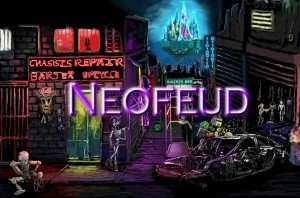










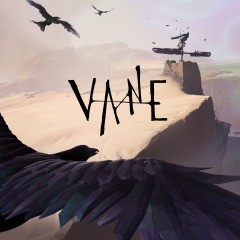
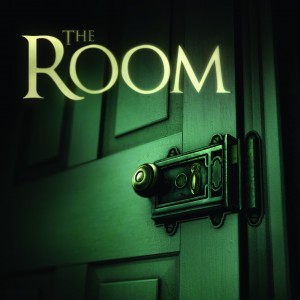

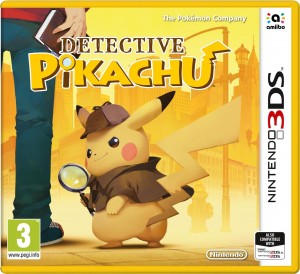
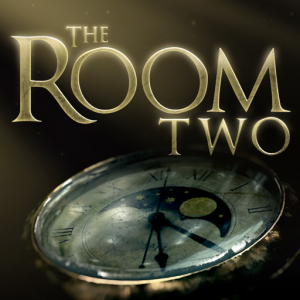
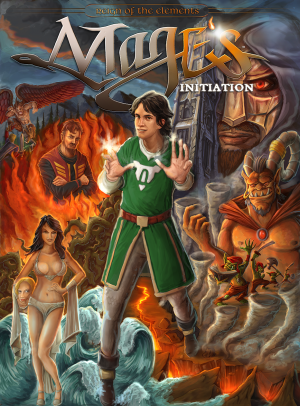


__small.jpg)




